Cervical mucus is the discharge from the cervix. This mucus has different characteristics depending on the phase of the menstrual cycle in which the woman is because the hormones that regulate the cycle influence its consistency and appearance and make it different at each stage.
Therefore, a woman observing what her cervical mucus looks like can guide her as to when ovulationoccurs. This will help you to calculate your fertile days and, therefore, to achieve pregnancy if you wish to do so.
Provided below is an index with the 8 points we are going to expand on in this article.
- 1.
- 1.1.
- 1.2.
- 1.3.
- 2.
- 3.
- 4.
- 5.
- 5.1.
- 5.2.
- 5.3.
- 5.4.
- 5.5.
- 5.6.
- 6.
- 7.
- 8.
Changes during the menstrual cycle
As mentioned, cervical mucus undergoes a series of changes throughout the menstrual cycle. These modifications in their characteristics serve to facilitate or hinder the passage of spermatozoa, depending on the moment of the menstrual cycle in which the woman finds herself:
- Fertile period
- on the days close to ovulation, the cervical mucus will allow sperm to enter the uterus.
- Infertile period
- cervical mucus will be thicker and thinner to prevent sperm from ascending into the female reproductive tract.
Therefore, depending on the specific phase of the menstrual cycle, the discharge from the cervix will have different characteristics.
Cervical mucus in follicular phase
The follicular phase of the menstrual cycle is from the first day of menstruation (day 1 of the cycle) to the day of ovulation (day 14 in a regular 28-day cycle).
Thus, during the follicular phase, it is not yet necessary to allow sperm to enter the uterus, since ovulation has not yet occurred. Therefore, cervical mucus will be thick, viscous, sticky, and rather opaque.
In addition, at the beginning of this phase and once menstruation is over, cervical mucus is scarce.
However, as ovulation approaches, the discharge from the cervix will begin to change its characteristics as the body begins to prepare for possible fertilization and pregnancy.
Cervical mucus at ovulation
Ovulation is the process by which the ovary expels the egg into the fallopian tubes so that it can be fertilized.
The time of ovulation and the days around it are the most fertile period for women since it is easier for the encounter between egg and sperm to occur.
For this to be possible, the cervical mucus modifies its properties in the periovulatory period, allowing sperm to enter the cervical canal.
The days close to ovulation are the most fertile days for women, so it is advisable to have sex during this period if you are looking for pregnancy.
Due to the influence of estrogens, the cervical secretion increases in quantity and becomes progressively clearer or transparent. In addition, the cervical mucus becomes more elastic, with a more watery consistency and very similar to that of raw egg white.
On the other hand, if taken between two fingers, the cervical mucus of the ovulatory period can separate forming thin threads without breaking, a characteristic known as filancia.
Cervical mucus in luteal phase
The luteal phase is the period from after ovulation until the end of the menstrual cycle.
At this stage, progesterone levels are high, which causes the characteristics of the cervical mucus to change again. Again, in the luteal phase the mucus is whiter, thicker and thinner, acquiring a creamy appearance.
Therefore, during the luteal phase, cervical mucus again makes it difficult for sperm to pass into the uterus.
Other factors causing changes
It should be noted that the appearance of cervical mucus may vary due to factors other than the menstrual cycle. As an example, hormonal contraceptives can affect cervical mucus by interfering with the hormone levels of the menstrual cycle.
On the other hand, cervical mucus analysis can also serve to alert us to possible infections in the female reproductive tract. If the mucus is yellow or greenish in color and has a changed odor, it may indicate a sexually transmitted disease (STD) that could also affect fertility.
Home analysis of cervical mucus
To check the color and texture of the cervical mucus and, thus, to be able to estimate whether the woman is in her most fertile days, it will be necessary to take a small amount of mucus by inserting the index finger into the vagina. For this purpose, it is essential that the hands are properly washed.
Subsequently, while the cervical mucus remains on the index finger, it will be important to touch it with the thumb and separate both fingers to evaluate its elasticity and philance.
It may be useful to take samples of cervical mucus at different phases of the menstrual cycle and even on a daily basis. In this way, the woman will be able to make a comparison that will help her to interpret whether she is in her most fertile period or not.
However, when the fertile period has not yet arrived, some dryness is common. This is because the cervical mucus is scanty, which can make it difficult to collect the sample.
Is it a reliable indicator of fertility?
The analysis of cervical mucus can be a good indicator of a woman's most fertile period, as long as one learns to correctly differentiate each of its textures and the changes in elasticity it undergoes throughout the menstrual cycle.
Thus, by recognizing the characteristics of the cervical mucus on the days close to ovulation, a woman can calculate her most fertile days to increase the frequency of sexual intercourse in order to achieve pregnancy.
For this, it is important to keep in mind that the oocyte can be fertilized for approximately 24 hours after ovulation. However, sperm can survive in the female reproductive tract for about 4 days in the ovulatory period. This is why the most fertile days correspond to the 3-4 days prior to ovulation and the day after.
However, it should be kept in mind that, despite ovulation occurring, there may be other factors that prevent fertilization or the achievement of pregnancy, such as having blocked tubes or poor seminal quality.
Therefore, if pregnancy is not achieved after a year of frequent and unprotected sexual intercourse, it is advisable to go to an assisted reproduction clinic to perform the necessary fertility tests on the couple.
FAQs from users
What can a dark-colored cervical mucus indicate?
Cervical mucus is produced by the mucous glands present in the cervix. Because the production of these glands is influenced by ovarian hormones, the characteristics of the mucus will change throughout the ovarian cycle. In addition to the hormonal variations of the cycle, cervical mucus can be an indicator that helps the patient and the gynecologist to know or suspect an abnormality.
Variations in its characteristics, such as odor and color, allow us to suspect colonization by different bacteria. Changes in cervical mucus to a brown, brown or dark color always indicate the presence of blood in small amounts.
When blood is present in the vagina, in small amounts, there is an interaction between the usual germs of this organ and the components of blood, mainly hemoglobin. As time goes by, the intense red color of the blood changes and becomes darker and darker.
The presence of a dark cervical mucus outside the episodes considered physiological should awaken in the woman the concern to consult her gynecologist to assess the need or not to study and the conduct to follow.
Does the odor of the discharge also vary?
Yes, the odor can change from one woman to another and even in the same woman, depending on the day of the cycle in which she is. However, if this odor changes suddenly and smells bad, it may be indicative of an infection, so it will be advisable to see a gynecologist.
Is it normal if I don't notice changes in my cervical mucus throughout my cycle?
Yes, cervical mucus changes its density, color and texture throughout the menstrual cycle, as it depends on hormonal variations. In addition, these changes in cervical mucus provide information about the period when pregnancy is most likely to occur.
Read more
What are the advantages and disadvantages of the cervical mucus method?
La principal ventaja que puede ofrecer el método del moco cervical para evaluar los días fértiles es que es un método fácil de realizar y económico. La mujer puede analizar su secreción cervical de forma casera y sin ningún tipo de instrumentación ni material necesario.
Sin embargo, como desventaja encontramos que la efectividad del método del moco cervical puede ser limitada. Las mujeres pueden presentar algunas variaciones e irregularidades en el ciclo y, en general, este método solo da buenos resultados cuando se presenta un ciclo menstrual regular, ya que la observación de los cambios en el moco cervical es también más regular.
Por otro lado, existen otras pruebas que pueden ofrecer un resultado más preciso para saber con mayor exactitud el momento de la ovulación. Se trata de los llamados test de ovulación, que miden el nivel de la hormona luteinizante (LH) cuyos valores aumentan cuando la mujer va a ovular. Este tipo de test también se pueden realizar de forma casera y se adquieren fácilmente en farmacias.
What does the fern leaf-shaped mucus mean?
This definition refers to the pattern left by the spreading and drying of the mucus in the fertile stage, i.e., the days close to ovulation.
This fern leaf-shaped pattern creates channels through which the sperm can pass. The passage of male cells through these ducts is essential for their capacitation and activation.
What is the Billings method?
The Billings method is a natural way of birth control that is based on the changes in cervical mucus that we have explained. In this way, it predicts the time of ovulation and, therefore, the most fertile period with the highest probability of pregnancy.
Recommended readings
As we have seen in this article, cervical mucus undergoes a series of changes during the menstrual cycle. For this to be carried out correctly, it is essential that there is a perfectly regulated hormonal balance. You can learn more about this process here: The menstrual cycle: what happens in each of its phases?
In the case of seeking pregnancy, the most important period will be the ovulatory period. If you want to know more about when and how it happens, we recommend that you visit this link: When does ovulation occur and what are the symptoms?
On the other hand, there are also certain alterations that can make the cervical mucus hostile to sperm. You can learn more about this topic in the following article: Cervical mucus alterations
We make a great effort to provide you with the highest quality information.
🙏 Please share this article if you liked it. 💜💜 You help us continue!
References
Brunelli R, Papi M, Arcovito G, Bompiani A, Castagnola M, Parasassi T, Sampaolese B, Vincenzoni F, De Spirito M. Globular structure of human ovulatory cervical mucus. FASEB J. 2007 Dec;21(14):3872-6.
Ceric F, Silva D, Vigil P. Ultrastructure of the human periovulatory cervical mucus. J Electron Microsc (Tokyo). 2005 Oct;54(5):479-84.
Check JH. Diagnosis and treatment of cervical mucus abnormalities. Clin Exp Obstet Gynecol. 2006;33(3):140-2. PMID: 17089574.
Colombo B, Mion A, Passarin K, Scarpa B. Cervical mucus symptom and daily fecundability: first results from a new database. Stat Methods Med Res. 2006 Apr;15(2):161-80.
Curlin M, Bursac D. Cervical mucus: from biochemical structure to clinical implications. Front Biosci (Schol Ed). 2013 Jan 1;5:507-15.
Evans-Hoeker E, Pritchard DA, Long DL, Herring AH, Stanford JB, Steiner AZ. Cervical mucus monitoring prevalence and associated fecundability in women trying to conceive. Fertil Steril. 2013 Oct;100(4):1033-1038.e1.
Fernandez-Hermida Y, Grande G, Menarguez M, Astorri AL, Azagra R. Proteomic Markers in Cervical Mucus. Protein Pept Lett. 2018;25(5):463-471.
Han L, Taub R, Jensen JT. Cervical mucus and contraception: what we know and what we don't. Contraception. 2017 Nov;96(5):310-321.
Najmabadi S, Schliep KC, Simonsen SE, Porucznik CA, Egger MJ, Stanford JB. Cervical mucus patterns and the fertile window in women without known subfertility: a pooled analysis of three cohorts. Hum Reprod. 2021 Jun 18;36(7):1784-1795.
FAQs from users: 'What can a dark-colored cervical mucus indicate?', 'Does the odor of the discharge also vary?', 'Is it normal if I don't notice changes in my cervical mucus throughout my cycle?', 'What are the advantages and disadvantages of the cervical mucus method?', 'What does the fern leaf-shaped mucus mean?' and 'What is the Billings method?'.
Authors and contributors
More information about Cristina Algarra Goosman
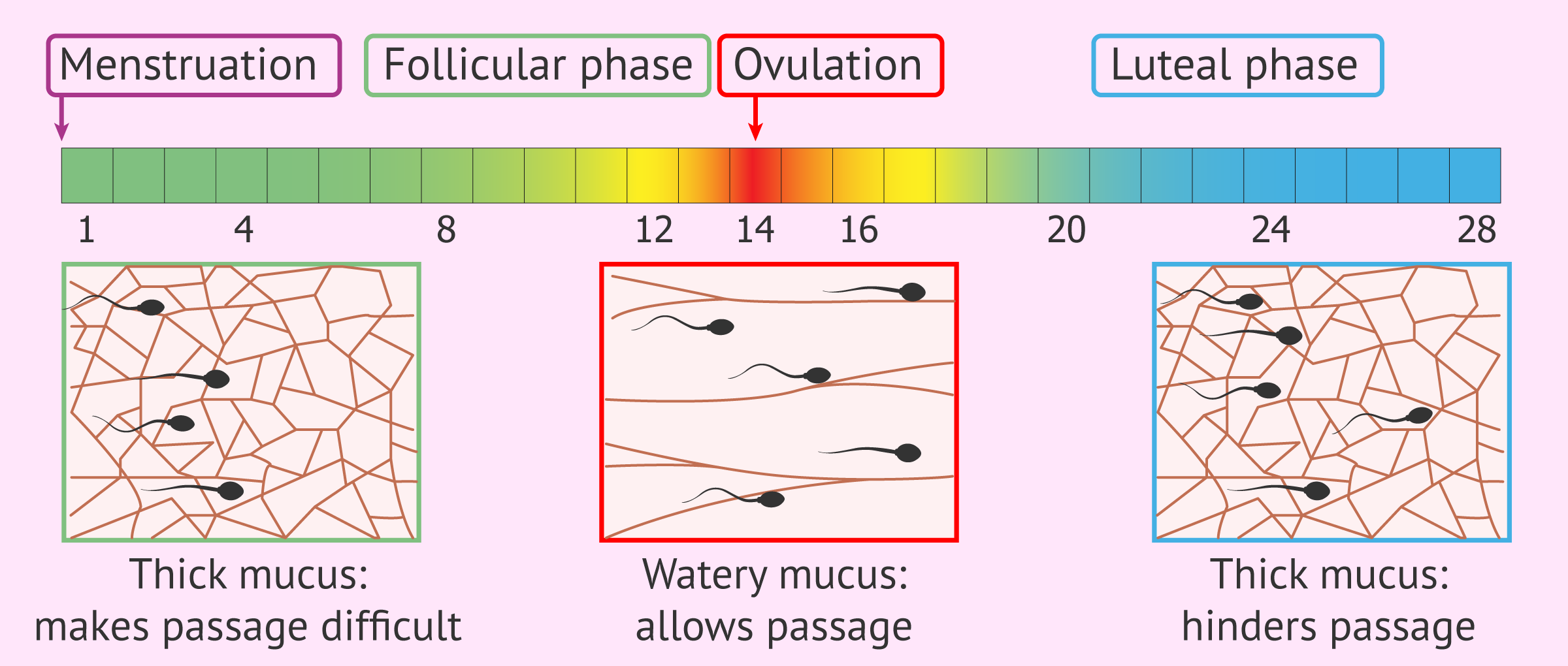
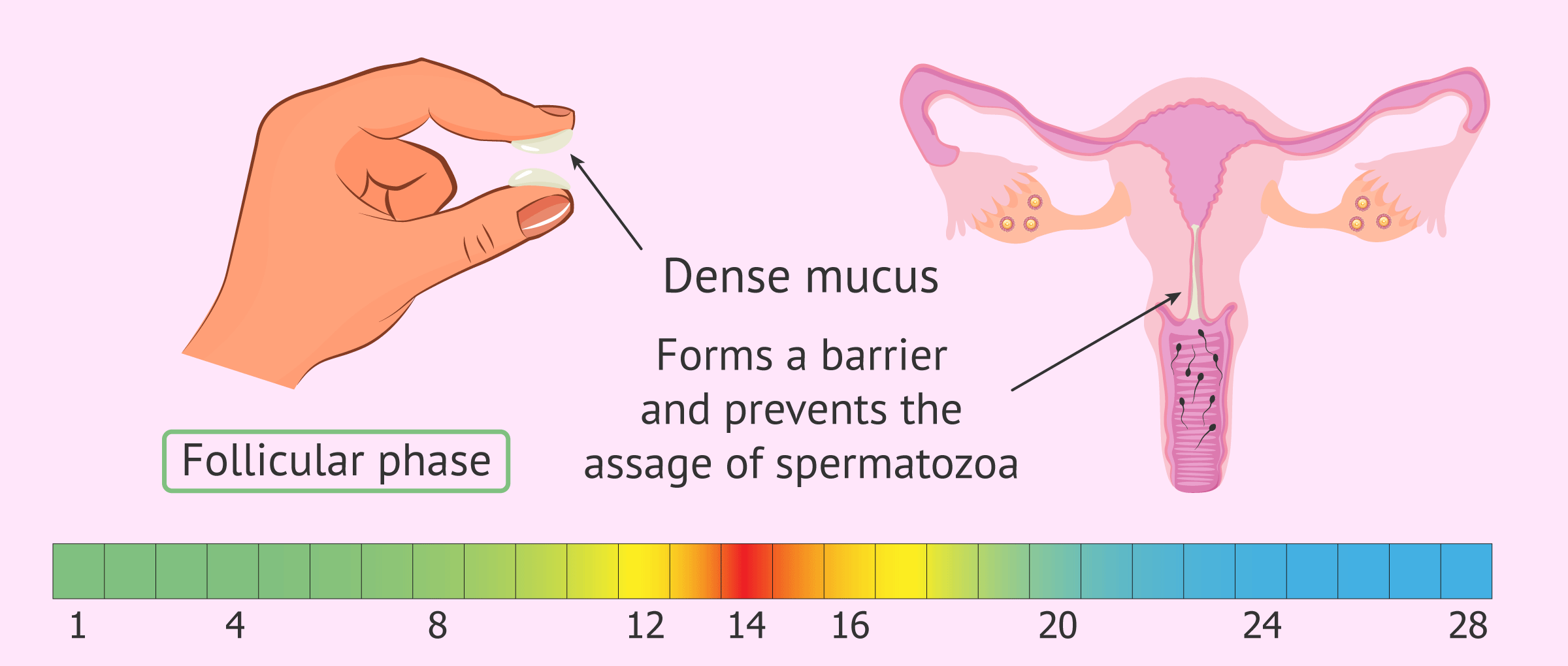
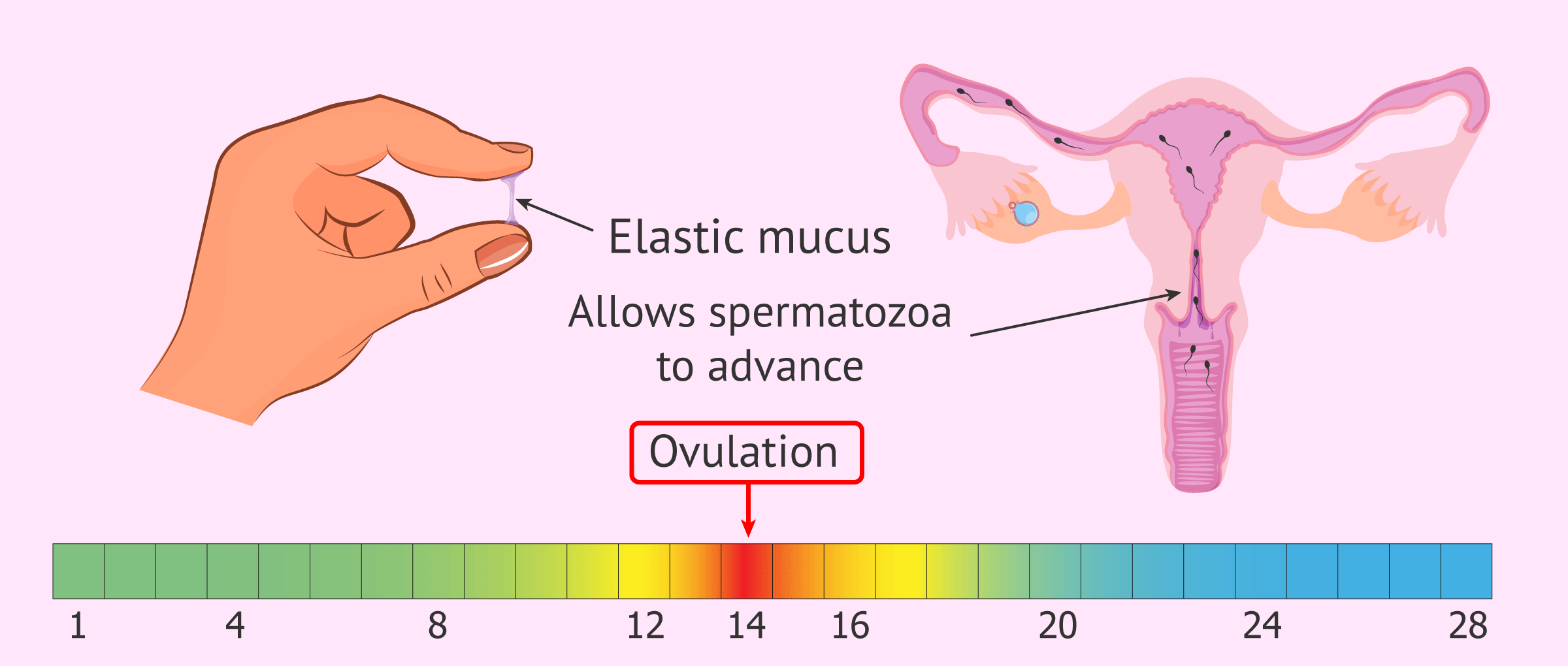
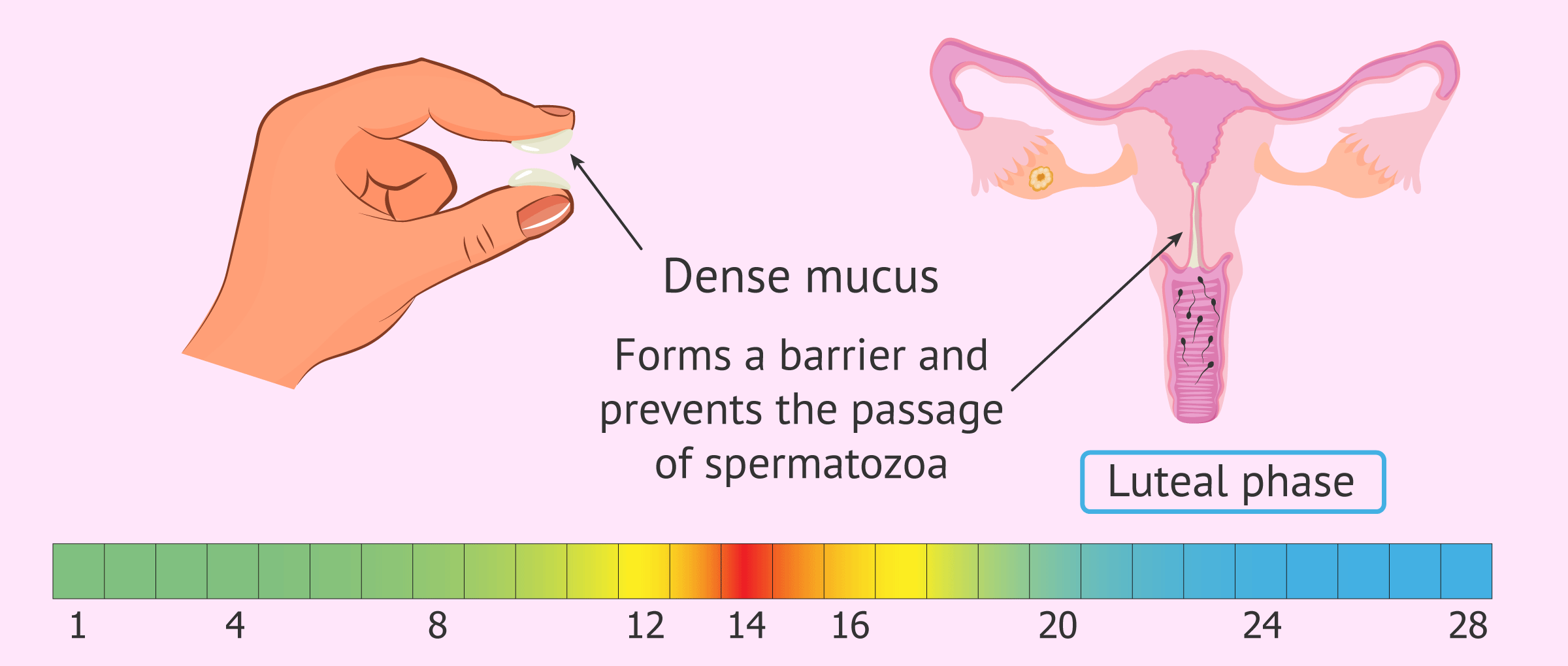
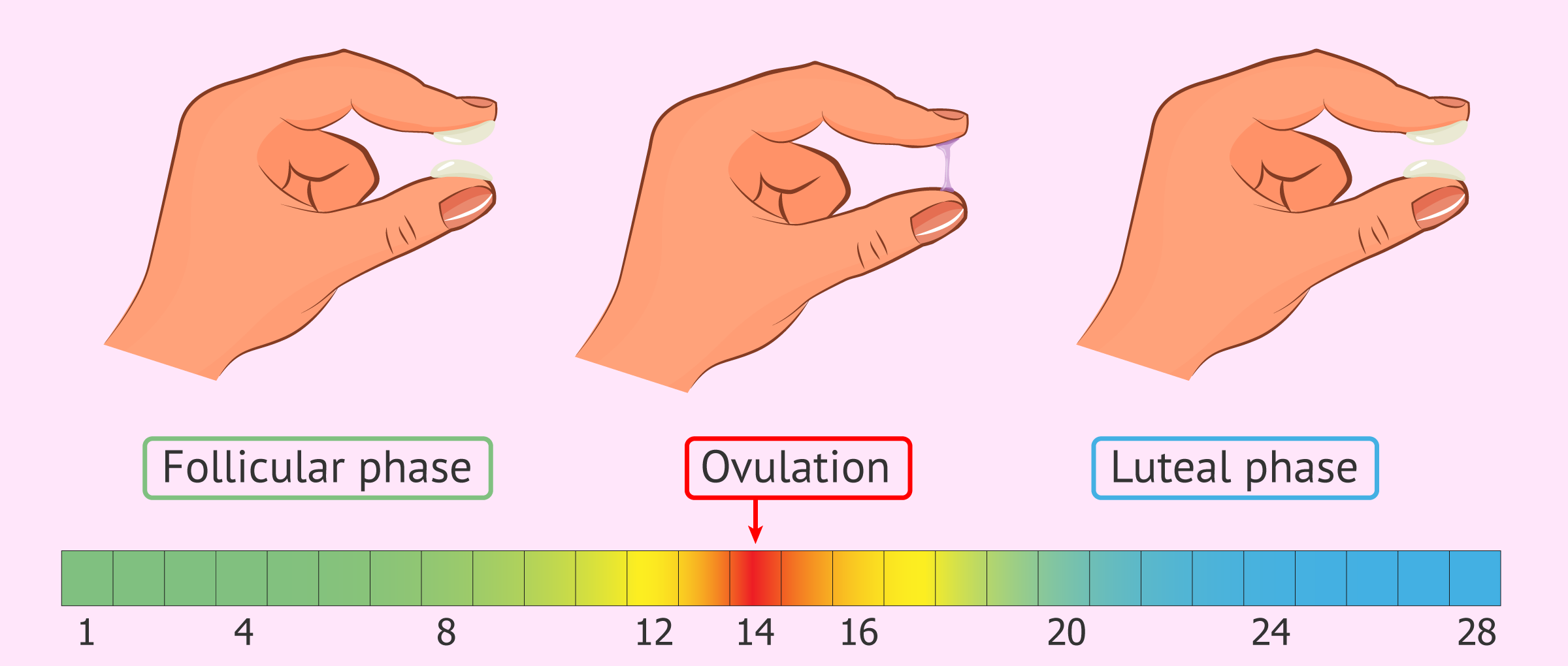
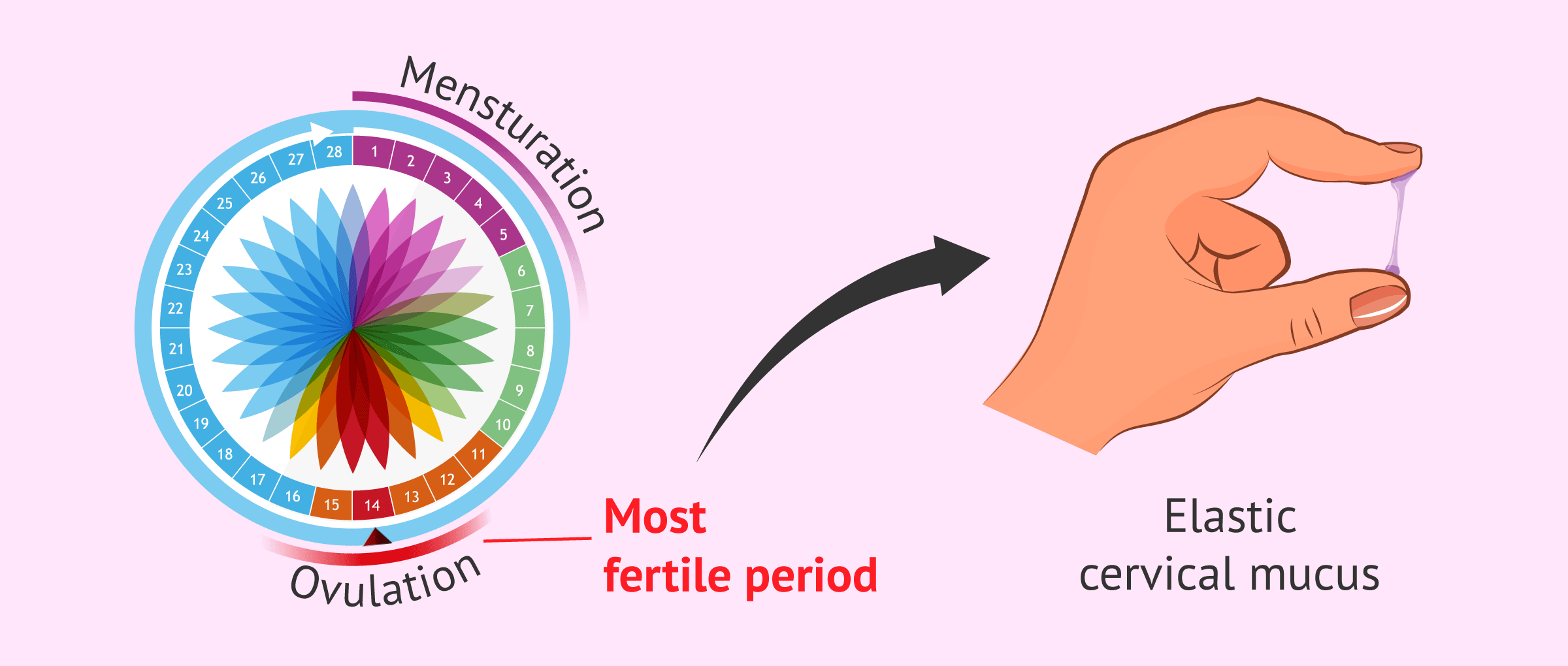





Hello, if I have sex on the day of ovulation, will I be pregnant?
Hello Serenity,
While having unprotected sex during the fertility window increases the chances of pregnancy, it does not guarantee it.
A healthy couple has a 20-30% chance of conceiving per cycle, which increases to 80% after one year. One year is considered the normal period for couples seeking pregnancy.
After this time it is advisable to see a fertility professional. This time is reduced to 6 months when the woman is older than 35 years.
I hope everything is going well,
Best regards.
Hi, so when is it best to have sex, I think my cervical mucus is changing and is closer to egg white.
Hi Maryjane,
The consistency of your cervical mucus determines your fertility window, that is, the days in your cycle when you are most fertile and therefore more likely to get pregnant.
This fertile window can be identified by different aspects, the cervical mucus (egg white consistency), a peak in basal temperature, and a peak in LH hormone (obtained by ovulation tests or OPKs).
Once you have identified your fertile period and ovulation date, having sex the 3 days before ovulation and the day after will be the most likely time to get pregnant.
I hope I have helped you